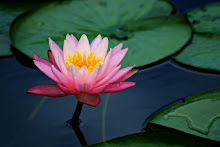A fascinating book made its way into my hands today while roaming between the shelves of the National Library: Qigong Fever by David A. Palmer. The book is actually a revised edition of its French version called La fièvre du qigong, published by EHESS. The purpose of the study is - to make it short - the elucidation of the "meanings, the goals and the social relations created around qigong practices", which "are not quite the same as those that have emerged around similar or even identical body techniques" (p 7).
I found some very interesting passages which I am going to transcribe here not only because they allow one to have a better idea of what lies behind the qigong phenomenon or to understand what we are being served nowdays under the "traditional" label, but also because I feel that there are lots of parallels to be drawn between qigong and its development and modern yoga.
I will start though - in order to arrouse your interest:) - with the author's experience in relation to this practice.
"The effects of qigong practice were powerful. I entered mental states I had never previously imagined. The limits of my body and of my world seemed to dissolve. I felt imbued with a powerful energy that could make anything possible. I no longer thought in words, but in forms and symbols which seemed to leap out of my head, my hands and my abdomen. I could see my thoughts like visible and living objects, as real and palpable as the material things in the outside world. The boundary between the real and the imaginary was vanishing. (p. 2)
...
A few years before the founding of the People's Republic of China" in 1949 a group of Communist cadres in the mountains of the South Hebei Liberated Zone discovered an ancient technique that, at almost no cost, could bring healts and vigour to the sickly and impoverished masses. It was a simple set of exercices that anyone could learn: every day stand still for half an hour, control your breath, concentrate on the yongquan acupoints at the centre of the soles of your feet, recite the mantra "My organs move, my mind is still". The cadres called this and other sitiing, lying and strtching exercices qigong - a name that literally means "breath training".(p.3)
...
In the 1950s and early 1960s traditional body technologies were reformulated and institutionalised as part of the Communist state's project of developing the health of the masses and of extracting and transforming all useful elements of traditional culture in the service of building a New China. The choice of the term qigong by Party cadres in 1949 reflected an ideological project: to extract Chinese body cultivation techniques from their "feudal" and religious setting, to standardise them, and to put them to the service of the construction of a secular, modern state. As such, qigong is an invented tradition. The object of its construction was to present qigong from a purely technical angle, to reconstitute the history of these techniques in isolation from their religious, political and social context, and to classify them according to a rational schema. (p. 5)
...
Many of the gymnastic, breathing and meditation techniques defined as qigong were widely practised in Chinese society before 1949, but were not known under that name, nor grouped under a single category. They were practiced in a diversity of contexts, and embedded in a variety of systems of representations and social organisations: monastic institutions, sectarian groups, martial arts networks, literati circles and medical lineages. It was only in 1949 that qigong became a global category which aimed to include all Chinese breathing, meditation and gymnastic techniques. As noted by Jian Xu, 'In a certain sense, the various forms of qi exercises designated by the modern term qigong always resided at the centre of Chinese culture, even though they were never regarded as self-sufficient cultural practices, but instead as ancillary to other cultural practices. ... Masters and students who transmitted knowledge of qi techniques usually did so in the name of a religion, or of a school of medecine or martial arts. It was unthinkable to study qi for the sake of its form and techniques and not in the service of other goals.'(p.8)
...
The status of body technologies began to change in the first half of the twentieth century with the introduction of Western values and the construction of a modern state. The new institutions privileged mechanical, disembodied ordering of the world: traditional body technologies were irrelevant to the ends of the modern bureaucracies, armies schools that mediated knowledge and power in the emerging society. [however, these body technologies manage tomake their way thanks to] widely circulated books that sought to eliminate the obscure esoteric language in which techniques had traditionally been couched, and to present them in the idioms of psychology, physiology and physics. (p.12-13)
...
But it was under the Communist regime that traditional body technologies became a distinct category. In its secular, technical, rational expression qigong has attempted a modern reformulation of the traditions through new combinations of techniques, new ideological constructions and enw models of transmission and collective practice. The technologies are traditional, but the qigong movement which diffused them in the second half of the twentieth century is a product of the Chinese socialist project of modernisation (p. 13)"
Subscribe to:
Post Comments (Atom)

No comments:
Post a Comment